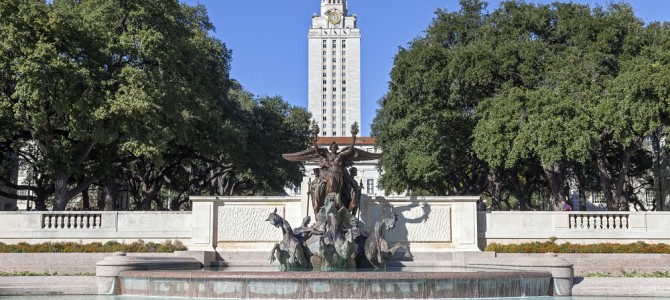
When South Carolina Gov. Nikki Haley called for the removal of the Confederate flag from its prominent place on the state capitol grounds in the aftermath of the Charleston church massacre last year, she managed to show respect for those who see the flag as an important part of Southern heritage and American history. “That flag, while an integral part of our past, does not represent the future of our great state,” she said. Instead, the flag would be displayed in a museum, where it belongs.
But it wasn’t enough just to remove the flag from state houses and official buildings. Across the country, universities and municipal governments began floating the idea of removing Confederate monuments and renaming schools and buildings that bear the names Confederate leaders. Some protestors even called for the desecration of Confederate graves.
Now the federal government is chiming in. Last week, the House of Representatives voted to ban prominent displays of the Confederate flag from national veterans’ cemeteries, including over mass graves. Those who want to mark an ancestor’s grave with a small flag may do so, but only on Memorial Day and Confederates Memorial Day. Otherwise, the hated flag must not be flown.
“Over 150 years ago, slavery was abolished,” said California Rep. Jared Huffman, who proposed the amendment that banned the flag. “Why in the year 2016 are we still condoning displays of this hateful symbol on our sacred national cemeteries?”
Such is the logic of those who wish to purge public spaces of symbols and monuments to the side that lost the American Civil War: If the past is offensive to the present, it must be abolished, or hidden. And what could be more offensive than a rebellion to preserve slavery?
Why It’s A Mistake To Hide From The Past
The danger in thinking this way is that eventually you lose hold of the past. Some Americans, especially on the Left, would be fine with that—the past was full of unenlightened racists and homophobes, after all, good riddance to them. For them, the past is an ever-present enemy. Thus what began last year in the wake of the Charleston church massacre as a reasonable reassessment of where and how the Confederate flag should be displayed, has now become a campaign to erase the memory of the Confederacy from the public square.
But two cases in Texas show why it’s a mistake to hide from the past. Simply put, there’s more to the legacy of the Civil War than the fight over slavery. If you want to understand America, you need to understand the Confederacy—not hide from it.
Two months after the Charleston shooting, officials at the University of Texas at Austin removed a statue of Jefferson Davis, president of the Confederacy, from its place on the mall between the school’s historic tower and a memorial fountain dedicated to veterans of the Civil War and WWI. For symmetry’s sake, UT also removed a statue of President Woodrow Wilson, which faced Davis across the quad.
One group, the Texas Division of the Sons of Confederate Veterans, filed a lawsuit last year against UT for removing the statues, and their argument demonstrates the futility of dividing history between the favored and the disfavored—and then erasing the memory of the latter. The group claims the university violated both state law and the terms of the donations that originally paid for the statues. The donor, George Washington Littlefield, was a Confederate veteran who went on to make a fortune as a Texas cattleman and banker. He was an early regent of the university and one of its first major donors, giving millions in land and money, and even bequeathing his own home, which is one of several buildings on campus that bear his name to this day.
The Davis statue was named in Littlefield’s will, which included funds to pay for it along with statues of Robert E. Lee, John H. Reagan (postmaster general of the Confederate States, who after the war publically renounced slavery and secession), Confederate General Albert Sidney Johnston, and former Texas governor James Hogg. Before his death in 1920, Littlefield also commissioned the statue of Wilson and a WWI memorial fountain in hopes that the mall would portray that war as a catalyst that inspired the country, North and South, to come together in reconciliation and unity.
The ornate art deco fountain on the south end of the mall named after Littlefield was designed and built by Italian-born sculptor Pompeo Coppini, who persuaded his patron to place a fountain dedicated to UT students who died in WWI instead of a bronze arch honoring the Confederate dead. Coppini thought a monument that only commemorated the Confederacy would sow division. He said, “As time goes by, they will look to the Civil War as a blot on the pages of American history, and the Littlefield Memorial will be resented as keeping up the hatred between the Northern and Southern states.”
As for the Sons of Confederate Veterans, their argument is simply that UT didn’t follow the proper procedures for removing the statues. On Friday, a state appellate court ruled that the group does not have standing to sue, and although they will likely file an appeal to the Texas Supreme Court, it’s unlikely they will prevail.
Not All Confederate Memorialization Is About Slavery
The desire to purge Confederate names isn’t confined to academia. Earlier this month, the Houston School Board changed the names of seven schools with ties to the Confederacy. And not just those named after rebel leaders, like Jefferson Davis High. They also changed the name of Lanier Middle School, named after Sidney Lanier, who served as a 19-year-old private in the Confederate army and later as a pilot for ships smuggling cotton past federal blockades. After the war he became a renowned poet and musician, and lamented the terrible cost and folly of the war, and celebrated the end of slavery. But no matter. The school is now named after Bob Lanier, a Baker Botts attorney and real estate developer who served as Houston’s mayor for six years in the 1990s.
In Austin, a similar effort is underway. The school board announced Monday the new name of what since 1939 has been Robert E. Lee Elementary School. The school board claims to be responding to complaints from parents, although when officials asked for suggestions from the public in an online poll, submissions included “Bleeding Heart Liberal Elementary,” “Adolf Hitler School for Friendship and Tolerance,” and “Donald J. Trump Elementary,” which got the most votes.
But jokes aside, the school’s history shows how not all Confederate memorialization in the twentieth century was meant merely to keep alive the the South’s “Lost Cause.” The school was paid for by a New Deal program that deliberately named schools and post offices around the country after major historical figures as a way to inspire hope and confidence for Americans struggling through the Great Depression. The program was even balanced in its approach. Before Robert E. Lee Elementary, in 1936 Austin got an elementary school named after Lorenzo de Zavala, who served as interim vice president of the Republic of Texas and was the only native of Mexico who signed the Texas Declaration of Independence. (No one is demanding to change the name of Zavala Elementary.)
Acknowledging that the Confederate flag will always be a symbol of slavery for some, especially black Americans, is one thing. It is quite another to try to hide from history—or to hide it from future generations. Even if the Confederate flag is nothing today but a symbol of slavery and racism for most people, it does not follow that all those who fought under it are not worth remembering or memorializing.
It took America a long time to reunite and reconcile after the Civil War, and some of the ways we chose to reconcile were tangible: monuments, memorials, tombstones, and statues. There were plenty of dead to remember, and remembering them became a way of moving on and overcoming deep divisions in the country. Today, as we face deepening divisions of our own, that’s something all Americans should know about—and help preserve for future generations.









